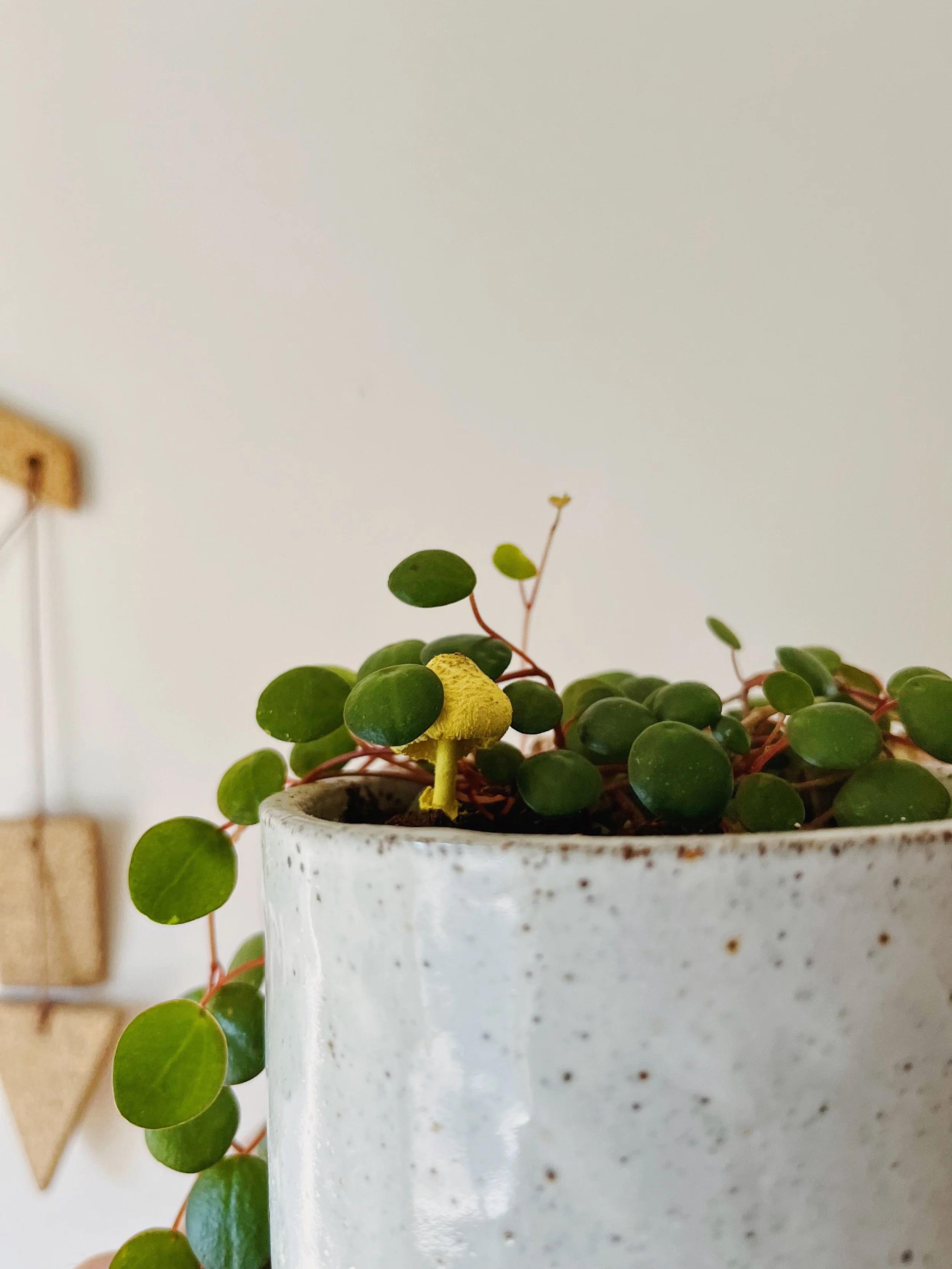Plants and Fungi: A Match Made Below the Soil
If you’ve ever noticed a mushroom popping out of the top of your plant’s potting mix, you might be temped to think something is wrong and you may have even hurriedly plucked the mushroom from the soil—fortunately, there’s no need to worry! Plants and fungi have a symbiotic relationship in nature, and indoors is no different.
We’ll be discussing how plants and fungi work together with one another, how to introduce mycorrhizae into your plant collection, along with the myriad of benefits of doing so.
This yellow mushroom (Leucocoprinus birnbaumii) is a common fungi to find in indoor culture—but don’t fret! This mushroom helps your plant by processing dead roots and organic material into food to exchange with your plant.
Mutualism in Nature
Plants and fungi have always benefitted one another in nature. To break it down into simple terms, fungi form networks beneath the soil called mycelium. These mycelium will colonize and live alongside the root system of plants—through the process of photosynthesis, plants produce sugars in their roots which the mycelium feed upon. In exchange for these sugars, the fungi then—in an extended capacity compared to plants—are able to find nutrients in the soil that they then share with the plant’s root system.
In nature, these complex networks of fungi can span miles and are the primary reason that trees and other plants, especially in large forests, are able to communicate with one another and alert neighboring trees to potential pests or dangers, triggering the plants’ innate immune response. Fungi and plants grow better together, and this mutualistic relationship is no different indoors.
Mushrooms have coexisted with plants since, well, forever. They provide a number of benefits to the plants they hang out with and help plants communicate with one another.
Indoor Use
When it comes to indoor use, introducing fungi into your plant’s potting mix is easy enough. There are a myriad of plant products out there with mycorrhizae and other beneficial bacteria included. These products typically come in a powder form, which are either intended to be dispersed within the soil at the time of repotting, or they are also able to be sprinkled on top of the soil and watered in.
Once the mycorrhizae and beneficial bacteria receive water, they are activated and begin to do their work beneath the soil for your plants. In addition to nutrient-sharing, mycorrhizae will aid your plants in water absorption and retention, allowing your plants to go slightly longer without water.
A lesser-known ability of mycorrhizae, especially with indoor plants, is reducing the risk of transplant shock. Due to their superior ability to assist in taking up nutrients, introducing fungi into your plant’s potting mix at the time of repotting can help them receive and consistently maintain the nutrients they need for a smoother transition to their new home and planter. Once introduced into your potting mix, most fungi can last and do their job effectively for at least a year or two before you would need to consider re-upping your plant’s microbe friends—this time period will also roughly coincide with when you might want to consider repotting your plants, or at least changing out their soil.
The white coating on the soil is actually a healthy mycelium colony. They help break down nutrients for your plants, and they also act as an anti-bacterial and anti-fungal agent. All good things!
With the numerous benefits of doing so, and also being more biologically-appropriate for our houseplants, it only makes sense to introduce mycorrhizae and other good bacteria into our plants’ potting medium to help them along their journey with us indoors—plus it’s always fun to wake up and see a mushroom hanging out next to your plant! If you’re looking to take the next step, we’re proud to carry both BIOS and Good Dirt products in our shops—both of their products will create a living ecosystem in your soil with fungi and beneficial bacteria to help push your plants along their journey indoors with you.
If you have any questions about introducing mycorrhizae into your plants’ soil, or if you have any successful experiences in doing so, drop a comment down below, visit one of our shops, or get in contact with us!
Words by: Egan Thorne
Photos by: Egan Thorne & Sebastian Muñoz



